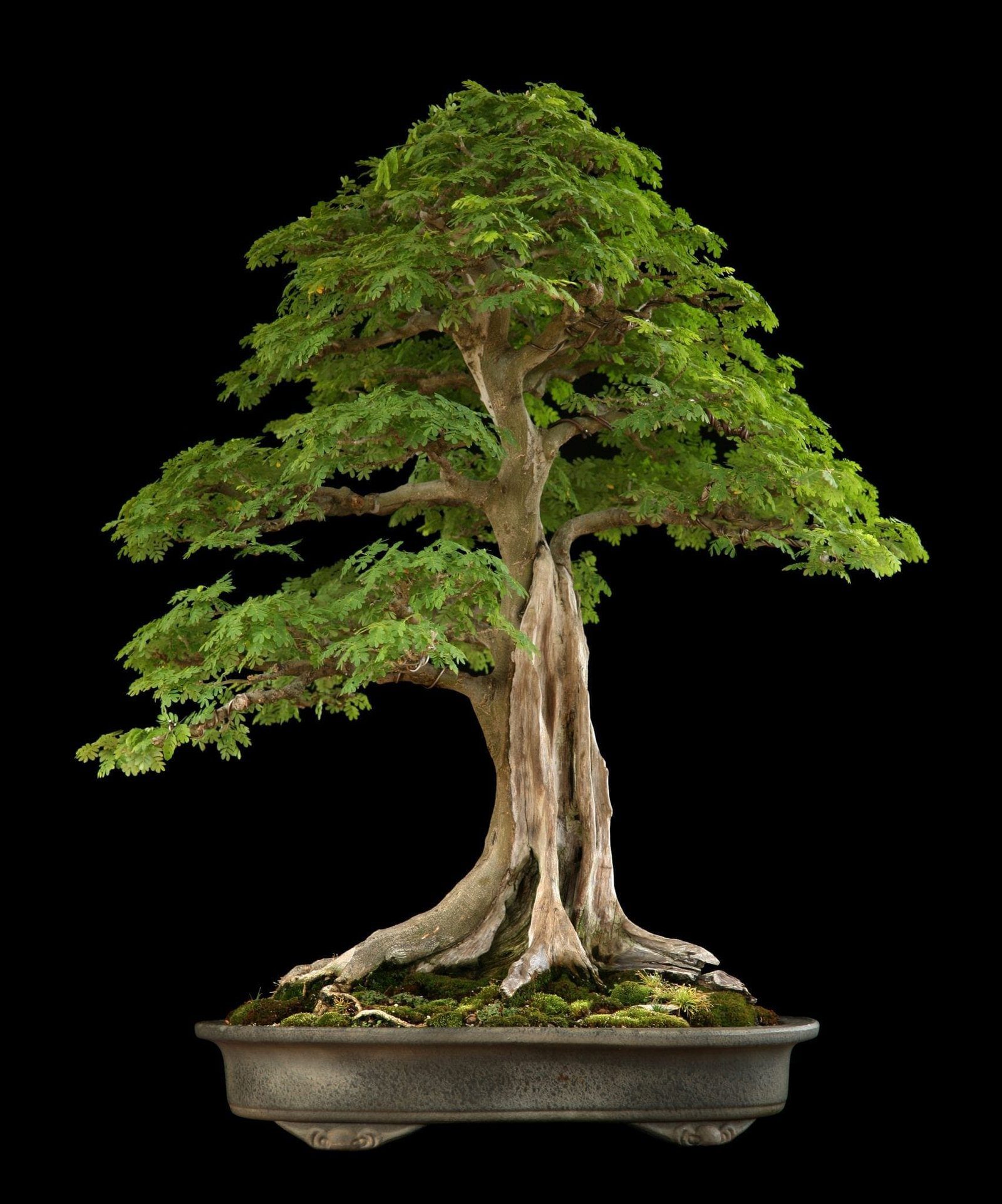
When you bring a bonsai tree into your life and home, you are adding a natural element that will encourage you to embrace the creative and responsible areas of your personality. Once you begin to cultivate a unique bonsai tree, you will enhance your life with proximity to nature.
As you review numerous tree species that can be formed into a bonsai, it can be tough to choose the right one. With tropical varieties, you’ll find plants that enjoy temperatures that are higher than 60 degrees Fahrenheit, which are ideal for indoor maintenance.
The Best Tropical Trees for Bonsai
Once you’ve decided to grow a tropical bonsai, you’ll need to pick a species. Several tree varieties to contemplate include Brazilian Rain Tree, Bougainvillea, Ficus and Fukien Tea. You can also choose unique trees to form into a bonsai such as the tabebuia, shohin and aralia.
Watering
Each bonsai requires its own unique watering schedule. Tropical trees can dry out fast due to coarse soil, and from being planted in a shallow pot. In fact, you may need to water your tree every day. Your tree will need water based upon the type of tree you buy, size of pot that you plant your bonsai in and your area’s weather conditions.
In order to determine if your bonsai needs water, feel the soil with your finger. Slip your finger into the dirt about half an inch, and if the soil feels dry, then it’s time to give your tree water.
When you water the tree, you must soak it completely. Therefore, your kitchen sink is the perfect place to give your tree moisture. Allow your tree to take a short bath for several minutes. You can also choose to let your tree absorb water through the pot’s drain holes, or you can give it a shower. The recommendation is to check the moisture of your bonsai tree’s soil every day.
Lighting
Tropical bonsai trees require plenty of warm, natural light. Your tree will most likely appreciate placement near a bright window. On the other hand, certain species prefer less light, so you’ll want to review the preferences of your tree.
With acclimated trees, an abundance of light is typically accepted. However, when you first set your tree outdoors for direct sunlight; be sure to set it in the shade first. After the tree has had time to adjust to the sun, you may gradually move it into more light. With this method, you’ll prevent the leaves from burning.
Fertilizing
You should give your tree extra nutrition during its growing season, which is in the spring and summer. Use organic fertilizer when you have your tree outdoors. You may also enrich your tree with a mix of seaweed or liquid fish.
With indoor tropical trees, you may use a less powerful fertilizer. Another option is to mix the enrichment at half power. Be careful with fertilizer and don’t over feed your tree. Furthermore, if your tree is weak or stressed, then wait until it’s stronger to give it fertilizer.
Fresh Air
Indoor tropical trees will benefit from your opening a window and will perk up when you place a fan on it during the cold winter months. The addition of air circulation will intensify cell growth and provide you with a happy, healthy tree.
Your tropical bonsai tree will adore spending time outside during the summer months. Watch for temperatures to reach above 60 degrees Fahrenheit, and set your tree outside when it’s warm. Once summer begins to end and evening temperatures drop below 60 degrees Fahrenheit, you should bring your tree back inside.
Cold winter months can be hard on trees, even when they are indoors. Therefore, a humidity tray may help your tree remain healthy. Also, make sure you provide air circulation and spritz your tree with water often.
Keeping Your Bonsai Tree Clean
With the growth of your tropical bonsai tree, you’ll have dropping leaves. You will want to strip dead leaves from your tree and keep the soil clean of them as well.
Moreover, when you mist your tree weekly, you will help the health of your bonsai by dissuading bugs and reducing the possibility of diseases.
Diseases and Bugs
Bonsai trees can become ill. Fortunately, you can protect your tropical tree by keeping a close eye on its roots and leaves. If you notice unusual leaf loss, gummy greenery or insects, then you may need to treat your bonsai. First, spray your tree with tepid water to remove all bugs. You should then spritz your tree with gentle insecticide treated soap.
You may need to repeat the spraying process once a week for two to three weeks to eliminate bugs entirely as they can come back.
Diligence is necessary when treating your tropical tree for bugs. A common misconception regarding indoor plants is that they’re less likely to be affected by insects and diseases such as fungus. However, bonsai trees that grow indoors are actually more susceptible. Be sure to set your tree outside when the weather allows as this will make your tree stronger.
Forming Your Bonsai Tree
If you purchase a fast growing tree species, then you will be trimming your tree often. Consequently, trees that grow more slowly won’t require as much attention from your shears. Use caution when pruning as you shouldn’t cut too much. Over trimming can weaken your tree, but you should cut enough of it to shape it to your liking.
When you are pruning larger section, wait until the last few days of spring or the first week of summer since your tree will be at its strongest.
A tropical tree is an excellent choice for a first time bonsai cultivator since they are hardy species. Furthermore, a tropical variety will enjoy spending time with you indoors or outdoors as long as it’s warm and sunny.